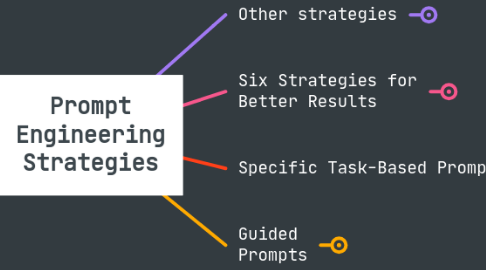
1. General Communication Model and Computational Thinking
1.1. General Communication Model
1.1.1. Sender
1.1.2. Message
1.1.3. Receiver
1.1.4. Context
1.1.5. Medium
1.2. Computational Thinking
1.2.1. Decomposition
1.2.1.1. Breaking down a complex problem or system into smaller, more manageable parts. This makes it easier to understand and solve each component separately.
1.2.2. Pattern Recognition
1.2.2.1. Identifying similarities or patterns among and within problems. Recognizing patterns can help in predicting and understanding future behaviors or in simplifying problem-solving processes.
1.2.3. Abstraction
1.2.3.1. Focusing on the important information only, and ignoring irrelevant detail. It involves generalizing from specific instances to broader concepts, which is crucial in developing algorithms.
1.2.4. Algorithm Design
1.2.4.1. Developing a step-by-step solution to the problem, or the rules to follow to solve the problem. Algorithms are a set of instructions that can be followed to complete a task.
1.2.5. Evaluation
1.2.5.1. Systematically analyzing a problem and its solution to ensure all aspects are considered and the solution is effectively meeting its objectives.
1.2.6. Generalization and Transfer
1.2.6.1. Applying problem-solving skills to different contexts. This involves taking a solution to one problem and applying it to a new and different context.
1.2.7. Logical Reasoning
1.2.7.1. The ability to make deductions that lead logically from one statement to another. It's about using coherent and logical steps to solve problems.
1.2.8. Debugging and Iteration
1.2.8.1. Refining and improving a solution based on trial and error. This involves testing and fixing problems, as well as continually improving and refining the algorithm.
2. Other strategies
2.1. Give the model a persona
2.1.1. This works as CONTEXT in a conversational model
2.2. Provide examples
2.2.1. This works as CONTEXT too
3. Six Strategies for Better Results
3.1. Context Framing
3.1.1. Contextual Background Setup
3.1.1.1. Answer from a specific text
3.1.2. Context-Driven Constraints
3.1.2.1. Reference all answers
3.1.3. Contextual Tone and Style Adaptation
3.1.3.1. Academic tone
3.1.4. Integrative Contextual References
3.1.4.1. Internal
3.1.4.2. External
3.2. Specificity
3.2.1. Precision in Query Formulation
3.2.2. Detail-Oriented Prompt Structuring
3.2.2.1. Work prompts aside
3.2.3. Specificity in Example Inclusion
3.2.3.1. To the comma
3.3. Language Nuances
3.3.1. Overall vocabulary
3.4. Domain Knowledge
3.4.1. Specialized vocabulary
3.5. Clarity and Precision
3.5.1. Articulating Unambiguous Objectives
3.6. Feedback Loop Implementation
3.6.1. Iterative Prompt Refinement
3.6.2. Analyzing and Adjusting to AI Responses
3.6.3. Continuous Improvement through Feedback
4. Specific Task-Based Prompts
4.1. Simple tasks
4.2. Complex tasks
4.2.1. Highly focused objectives
4.2.2. Instruct specific tasks
5. Guided Prompts
5.1. Provide specific direction
5.2. Use delimiters to distinguish input sections
5.2.1. Markdown
